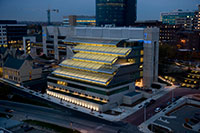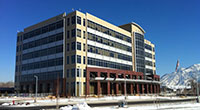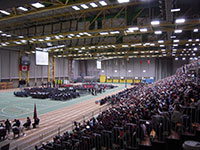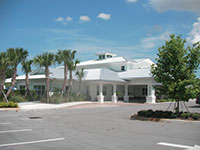view all Case Studies
Intelligent Building Gets Smart Lighting Controls

In April 2011, the Van Andel Institute’s (VAI) 240,000 square-foot Phase II biomedical research center in Grand Rapids, Mich., earned LEED Platinum status. The center relies on intelligent building controls to achieve both energy and operational efficiencies, using open protocols for communications and to ensure that the facility is adaptable to technology upgrades.
September 5, 2011 -
Building Automation
In April 2011, the Van Andel Institute’s (VAI) 240,000 square-foot Phase II biomedical research center in Grand Rapids, Mich., earned LEED Platinum status. The center relies on intelligent building controls to achieve both energy and operational efficiencies, using open protocols for communications and to ensure that the facility is adaptable to technology upgrades.
The eight-story, $178 million addition features a glass roof that introduces an abundance of natural light throughout the facility, including open laboratories. In addition to labs, the building includes offices, meeting rooms, a 90-seat conference center, a 100-seat cafeteria, an interactive discovery wall and a library.
“Van Andel Institute’s Phase II building incorporates a multitude of green initiatives beyond what seemed possible for a research institute just a few short years ago,” says David Van Andel, VAI chairman and CEO.
An advanced lighting control system was a contributor to the LEED goal. A key consideration in selecting WattStopper controls was the availability of both open and closed loop photosensors for optimal daylight harvesting solutions in the many different types of daylit spaces throughout the facility. These controls can typically reduce lighting energy costs by as much as 20 to 50 percent without compromising lighting quality, according to the company. And, since savings coincide with the time of day when utility companies experience peak demand, daylighting provides a natural form of demand response.
The lighting system integrates with other building systems such as HVAC, fire, security and card access. The system operates autonomously to control lighting, but shares lighting status, lighting levels, and energy usage via BACnet.
The system is compatible with Tridium’s Niagara framework, which helps facilitate an open and interoperable approach for controls by allowing the IT enterprise, building automation controls systems and underlying mechanical systems to work in tandem. The controls platform supports peer-to-peer communication, which enables the system to initiate requests for data across different applications and subsystems. Incorporating the same core technology and operating software in HVAC and lighting has enabled the facilities management team to easily adapt to ever-changing operational scenarios.
Next
Read next on FacilitiesNet












